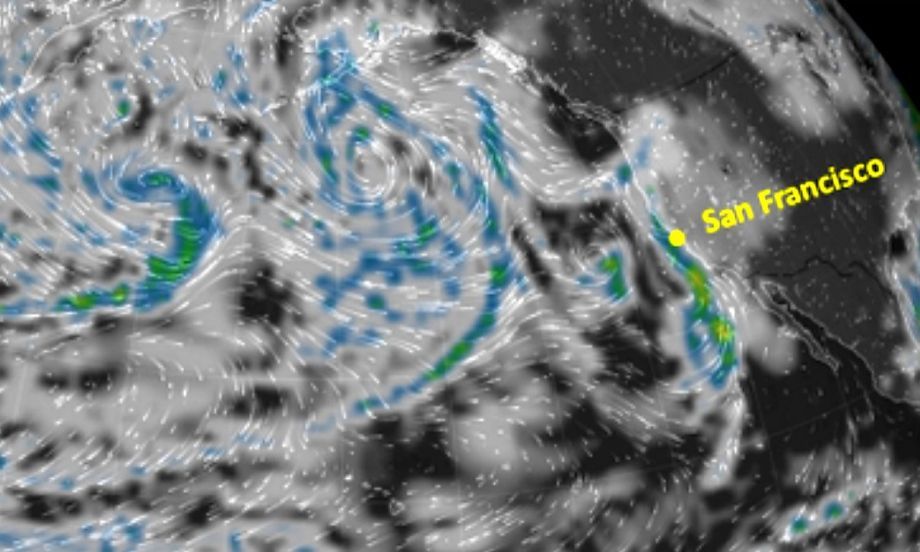XiaNaphryz
LATIN, MATRIPEDICABUS, DO YOU SPEAK IT

With all the hubbub about how strong an El Niño year it'll be in 2016, I figure we should have a thread to contain all the various storm/flood/weather related news that will inevitably pop up in the next couple of months. We've already had several in the past month alone !
For the uninformed:
https://en.wikipedia.org/wiki/El_Niño
El Niño is defined by prolonged warming in the Pacific Ocean sea surface temperatures when compared with the average value. The U.S NOAA definition is a 3-month average warming of at least 0.5 °C (0.9 °F) in a specific area of the east-central tropical Pacific Ocean; other organizations define the term slightly differently. Typically, this anomaly happens at irregular intervals of two to seven years, and lasts nine months to two years. The average period length is five years. When this warming occurs for seven to nine months, it is classified as El Niño "conditions"; when its duration is longer, it is classified as an El Niño "episode."
What does that mean for your area?
North America
Winters, during the El Niño effect, are warmer and drier than average in the Northwest, northern Midwest, and upper Northeast United States, so those regions experience reduced snowfalls. Meanwhile, significantly wetter winters are present in northwest Mexico and the southwest United States, including central and southern California, while both cooler and wetter than average winters in northeast Mexico and the Southeastern United States (including the Tidewater region of Virginia) occur during the El Niño phase of the oscillation.
The synoptic condition for the Tehuantepecer is associated with high-pressure system forming in Sierra Madre of Mexico in the wake of an advancing cold front, which causes winds to accelerate through the Isthmus of Tehuantepec. Tehuantepecers primarily occur during the cold season months for the region in the wake of cold fronts, between October and February, with a summer maximum in July caused by the westward extension of the Azores High. Wind magnitude is greater during El Niño years than during La Niña years, due to the more frequent cold frontal incursions during El Niño winters. Its effects can last from a few hours to six days.
El Niño is credited with suppressing Atlantic hurricanes, and made the 2009 Atlantic hurricane season the least active in 12 years.
South America
Because El Niño's warm pool feeds thunderstorms above, it creates increased rainfall across the east-central and eastern Pacific Ocean, including several portions of the South American west coast. The effects of El Niño in South America are direct and stronger than in North America. An El Niño is associated with warm and very wet weather months in April–October along the coasts of northern Peru and Ecuador, causing major flooding whenever the event is strong or extreme. The effects during the months of February, March, and April may become critical. Along the west coast of South America, El Niño reduces the upwelling of cold, nutrient-rich water that sustains large fish populations, which in turn sustain abundant sea birds, whose droppings support the fertilizer industry. The reduction in upwelling leads to fish kills off the shore of Peru.
The local fishing industry along the affected coastline can suffer during long-lasting El Niño events. The world's largest fishery collapsed due to overfishing during the 1972 El Niño Peruvian anchoveta reduction. During the 1982–83 event, jack mackerel and anchoveta populations were reduced, scallops increased in warmer water, but hake followed cooler water down the continental slope, while shrimp and sardines moved southward, so some catches decreased while others increased. Horse mackerel have increased in the region during warm events. Shifting locations and types of fish due to changing conditions provide challenges for fishing industries. Peruvian sardines have moved during El Niño events to Chilean areas. Other conditions provide further complications, such as the government of Chile in 1991 creating restrictions on the fishing areas for self-employed fishermen and industrial fleets.
Southern Brazil and northern Argentina also experience wetter than normal conditions, but mainly during the spring and early summer. Central Chile receives a mild winter with large rainfall, and the Peruvian-Bolivian Altiplano is sometimes exposed to unusual winter snowfall events. Drier and hotter weather occurs in parts of the Amazon River Basin, Colombia, and Central America.
Africa
In Africa, East Africa — including Kenya, Tanzania, and the White Nile basin — experiences, in the long rains from March to May, wetter-than-normal conditions. Conditions are also drier than normal from December to February in south-central Africa, mainly in Zambia, Zimbabwe, Mozambique, and Botswana. Direct effects of
Europe
El Niño's effects on Europe appear to be strongest in winter. Recent evidence indicates that El Niño causes a colder, drier winter in Northern Europe and a milder, wetter winter in Southern Europe. The El Niño winter of 2009/10 was extremely cold in Northern Europe but El Niño is not the only factor at play in European winter weather and the weak El Niño winter of 2006/2007 was unusually mild in Europe, and the Alps recorded very little snow coverage that season.
Asia/Australia
As warm water spreads from the west Pacific and the Indian Ocean to the east Pacific, it takes the rain with it, causing extensive drought in the western Pacific and rainfall in the normally dry eastern Pacific. Singapore experienced the driest February in 2014 since records began in 1869, with only 6.3 mm of rain falling in the month and temperatures hitting as high as 35 °C on 26 February. The years 1968 and 2005 had the next driest Februaries, when 8.4 mm of rain fell.
El Niño resulting in drier conditions occur in parts of Southeast Asia and Northern Australia, increasing bush fires, worsening haze, and decreasing air quality dramatically. Drier-than-normal conditions are also in general observed in Queensland, inland Victoria, inland New South Wales, and eastern Tasmania from June to August.
Antarctica
Many ENSO linkages exist in the high southern latitudes around Antarctica. Specifically, El Niño conditions result in high pressure anomalies over the Amundsen and Bellingshausen Seas, causing reduced sea ice and increased poleward heat fluxes in these sectors, as well as the Ross Sea. The Weddell Sea, conversely, tends to become colder with more sea ice during El Niño.
For those of you on the west coast of the US, the first barrage is heading in this week as it appears there are already four storms in the Pacific heading towards the coast and will bring rain over a span of two weeks. Up here in NorCal, some forecasts have predicted that we could get half of the entire month's average rainfall during the first week alone.

Hmmm...I wonder if the Super Bowl will get rained out.
If you're in an area prone to flooding (or idiot drivers who can't remember how to drive in the rain until after the first storm), make sure you have an emergency kit ready in case of power outages, sandbags at the ready if necessary (if you're in an area that floods a lot, these will sell out faster than you realize), and stay safe driving on the road!






